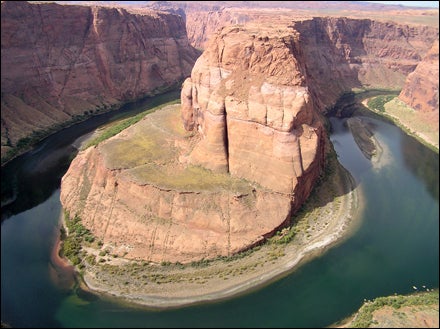Q. What is “dead pool?”
A. Trouble, that's what. Dead pool is the level at which water can no longer be released from a reservoir. Take Lake Powell, on the Colorado River. Glen Canyon Dam's lowest turbines sit 210 feet below “full pool,” which is when the bathtub is topped up. Water drops below turbines? No power. If it drops another 116 feet, past the lake's lowest point of egress, the river-outlet works, you get dead pool, boat ramps in midair, tap-water-less Vegas.
So could it happen? In December, Powell sat at 3,629 feet, holding 14.8 million acre-feet, or 61 percent of capacity. But river flows are projected to drop 10 to 30 percent over the next 30 years. Then there's the sediment: With 45 million tons deposited into Powell every year, the lake is roughly 6 percent full of silt. James Lawrence Powell, author of, not surprisingly, Dead Pool, foresees a scenario in which silt could build up as the lake surface falls and, oops, the Grand Canyon goes dry. “It's inevitable,” he says, and it could happen as soon as 2030.
The Bureau of Reclamation loudly begs to differ. At this rate, says Rick Clayton, hydraulic engineer for the Glen Canyon Dam, the lake won't clog for 450 years. “In the next 50 to 100 years,” he writes, “falling water levels will have a much more significant impact.” Either way, hope that dead pool doesn't make its way to a faucet near you.


